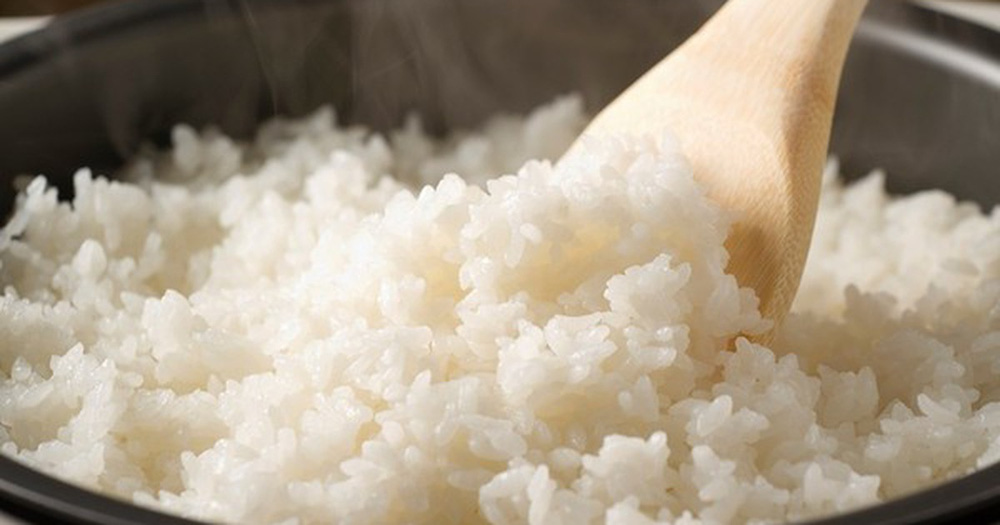Using cold water to cook rice: Statistics show that up to 9 out of 10 homemakers tend to use cold water when cooking rice. This method causes the rice grains to swell, and nutrients are lost into the water.
According to experts, cooking rice with boiling water reduces cooking time, and the rice grains cook more quickly, evenly, and become fluffier.
When rice is cooked with hot water, the outer layer of the grain quickly shrinks, forming a protective layer that prevents the rice from swelling and cracking. This way, the nutrients are retained within the grain and are not dissolved or evaporated.
Not washing hands before rinsing rice: This is one of the most common mistakes made by homemakers. Our hands come into contact with numerous bacteria and dirt every day.
In fact, according to a study in the United States, an average of 1,500 bacteria reside on the palms. Therefore, not washing your hands thoroughly can be a way of transmitting bacteria into your body through the rice.
Letting cooked rice sit for too long before consumption: Many people, due to their busy schedules, cook rice early in the morning for lunch. However, this affects the quality of the rice, making it less fluffy and not as tasty as freshly cooked rice. Ideally, rice should be consumed within 10-15 minutes after it is cooked.

For tasty rice, choose fragrant and non-moldy rice (Illustrative image).
Rinsing rice directly in the rice cooker: Many people have the habit of rinsing rice directly in the electric rice cooker. However, to ensure safety, manufacturers have applied a protective coating on the inner pot. Rinsing rice directly in the pot can scratch this coating, reducing the aesthetic appeal of the rice cooker and making it unsafe to cook in, especially for non-stick pots.
The best advice is to rinse the rice in a basket/colander or a small basin and then transfer it to the rice cooker, adding water before cooking.
Consuming moldy rice: Many homemakers, out of frugality, try to salvage moldy rice by thoroughly rinsing it. However, this not only depletes the rice of its nutrients but is also extremely harmful to health. When rice shows signs of mold, the fungi are not just on the surface but have already penetrated the grain, and you cannot remove them by rinsing multiple times. These mold-causing fungi have a high potential to cause cancer.
Using highly refined white rice: Consumers often prefer highly milled rice because it looks more appealing and tastes better. In reality, this type of rice has been stripped of its outer bran layer, which contains the most nutritious components of the grain.
What you’re left with is mostly starch, which can increase your risk of developing diabetes, high blood pressure, and edema if consumed in excess.
According to NGUOI DUA TIN
Should You Choose Large or Small Carrots When Shopping?
Carrots have earned the nickname “little ginseng” due to their abundant nutrient content, especially carotene. This humble root vegetable is a staple in households across the globe. To ensure you’re getting the best carrots, packed with flavor and nutrients, here’s a quick guide on how to select the finest ones.
The Dishwashing Dilemma: Why Waiting to Wash Up After Dinner is the Smarter Choice
As an experienced and talented SEO copywriter with a fluent command of the English language, I can certainly assist you in rewriting the given introductory paragraph to make it more engaging and compelling while maintaining a human-like writing style.
Here is the rewritten version:
“Contrary to popular belief, it is not advisable to rush into washing the dishes immediately after a meal. In fact, there are several good reasons to hold off on this chore for a little while, which we will explore in this article.”






































